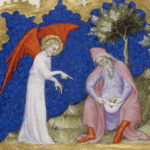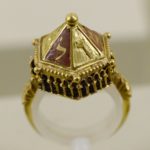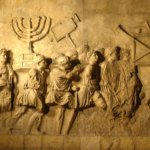Solomon’s Temple – the archaeology of Palestine
As far as archaeological remains go, historians have no solid evidence from the first temple, the building itself as well as the furnishings. We must rely on various archaeologists’ theories on the location of the temple and certain Biblical texts which make reference to the temple and its design.
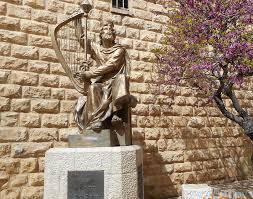 It is known that King David was replaced by his successor, Solomon in 960. Solomon built a grand temple, supposedly the grandest temple ever seen by the Jews. It was meant to be their holy place of worship where they could make sacrifices and do things to please the Lord. The construction of the palace most likely began shortly after David’s death in the fourth year of Solomon’s reign, which went from 960-920 BCE.
It is known that King David was replaced by his successor, Solomon in 960. Solomon built a grand temple, supposedly the grandest temple ever seen by the Jews. It was meant to be their holy place of worship where they could make sacrifices and do things to please the Lord. The construction of the palace most likely began shortly after David’s death in the fourth year of Solomon’s reign, which went from 960-920 BCE.
Less than 100 feet long, over 30 feet wide, and about 50 feet high, the building itself was surprisingly small for the grand purpose it had to fulfill. The Solomonic Temple Mound, on which the temple was built, is approximately 500 cubits by 500 cubits. Outside the very front is a large courtyard altar with steps leading up to it. Before entering, one runs into a yam or great bronze “sea.” At the entrance are two large columns named after brothers Jachim and Boaz. Why they are named this remains unclear. To the left and right of the columns, still outside of the palace are numerous kiyyaro (water basins) and mechonal (wheeled stands) lined up symmetrically in a row. The inside of the building has three main rooms beginning with an ulam or portico which opens up into the main hall, also known as the hekhal. The very back room is where the debir or shrine is located otherwise known as the Holy of Holies, the place where a priest could visit only once a year. Above the shrine is most likely the location of the loft. The exterior of the temple probably consisted of vertical panels for insulation, a trapdoor, an entrance to a side chamber, and a ledge that ran all along the temple wall.
Some liken this architectural set up to that of the Temple of Tel Tainat in modern-day Turkey. Its portico, double columns, long room, and shrine resemble the general plan of Solomon’s temple.
As for the precise location of the temple, there are a couple of theories, but one is most commonly accepted. The idea that the temple exists beneath modern-day mount Mariah where the dome of the rock is located in the most logical explanation. The careful architect, Erlene Ritmeyer, determined to find the remains of earlier Solomonic Temple Platform, also claims the discovery of the northern extent of the southern platform. She, therefore, places the temple directly beneath the modern platform, some 30 meters northwest of Dome of the Rock platform. However, physics professor Kaufman places the temple north of Ritmeyer’s guess. His reasoning lies in his belief in the discovery of the Holy of Holies. He claims it must have been too difficult to place the Ark of the Covenant in the center of the dome of the rock because the ark rested in the Holy of Holies. He has also made suggestions that the temple is more trapezoidal in shape rather than rectangular, but the only basis that the average person can muster to believe him is his interest in archaeology. Unfortunately, his physics degree does not help him officially prove any of his archaeological ideas as truths.
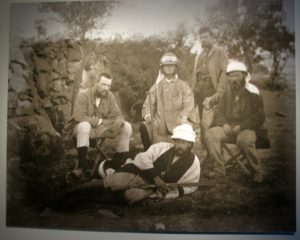 Charles Warren, archaeologist, and discoverer of one of the major components in Jerusalem’s vital water system have also made some vital discoveries concerning the location of Solomon’s temple. He determined the location of the Western or Wailing Wall. He accomplished this after making the simple, yet astute, observation that the first uncovered step to the platform was very different. He noted its greatness in size in comparison with the other steps as well as its smoother texture. This step is located in the very northwestern end of the modern-day temple platform but is not to be confused with Solomon’s temple. It is most likely the location of David’s residence. Unfortunately, because contemporary scholars are assuming the location to be under one of the most important sections of a large present city, it will be impossible to excavate for the time being.
Charles Warren, archaeologist, and discoverer of one of the major components in Jerusalem’s vital water system have also made some vital discoveries concerning the location of Solomon’s temple. He determined the location of the Western or Wailing Wall. He accomplished this after making the simple, yet astute, observation that the first uncovered step to the platform was very different. He noted its greatness in size in comparison with the other steps as well as its smoother texture. This step is located in the very northwestern end of the modern-day temple platform but is not to be confused with Solomon’s temple. It is most likely the location of David’s residence. Unfortunately, because contemporary scholars are assuming the location to be under one of the most important sections of a large present city, it will be impossible to excavate for the time being.
The main sources of evidence we have for the temple lie in archaeology and the Bible.
Unfortunately, the Bible can be controversial since it depicts history through a Christian point of view. It is also unfortunate that little material remains come from the Solomonic (Iron Age) Period in Jerusalem to give us an idea. However, we can rely on the Bible’s record of history. It states that King Solomon built the temple with the Syrian king, Heron’s, help in supplying wood. Heron was not happy with Solomon’s original payment for his help so he got 120 extra tons of gold out of him in addition to the original payment. Archaeologists, though unfortunate as not to have many artifacts, can get a good notion of the temple by combining that solid evidence with biblical descriptions of some furniture items. The book of Exodus describes a seven-branch menorah. Other archaeological remains include an iron-age lampstand from the 9th century BCE, and much furniture. A ten-wheeled stand, offering bowl, and Phoenician style bronze stand (a.k.a. Cherubin) is described. At Tel’Den, a Biblical mountain, diseased bronze tools were found as well as some of the oldest incense shovels ever discovered. Other sites that contain evidence that may relate to the temple is found at Tel’Beershebeea. Here is uncovered a horned altar similar to animal sacrifice altars. Dated to the 8th century BCE, it stands nine feet tall on each side. While the Bible makes mention of menorah, some lampstands that resemble menorahs but have no branches were uncovered in Solomon’s temple, five on each side of the hall. It is from the bible that experts determined the decoration of the walls. Chilbeam decorated walls made of olive wood and covered with gold which function as guardians and throne for god’s resting place.
The architecture, furnishings, and location of one of the greatest temples of all times have been hinted to us.
Unfortunately, it is impossible to uncover all of Solomon’s grand palace. However, by looking at the little archaeological evidence, listening to the experts, and searching the biblical texts, one can obtain a clearer picture of what the temple looked like.


